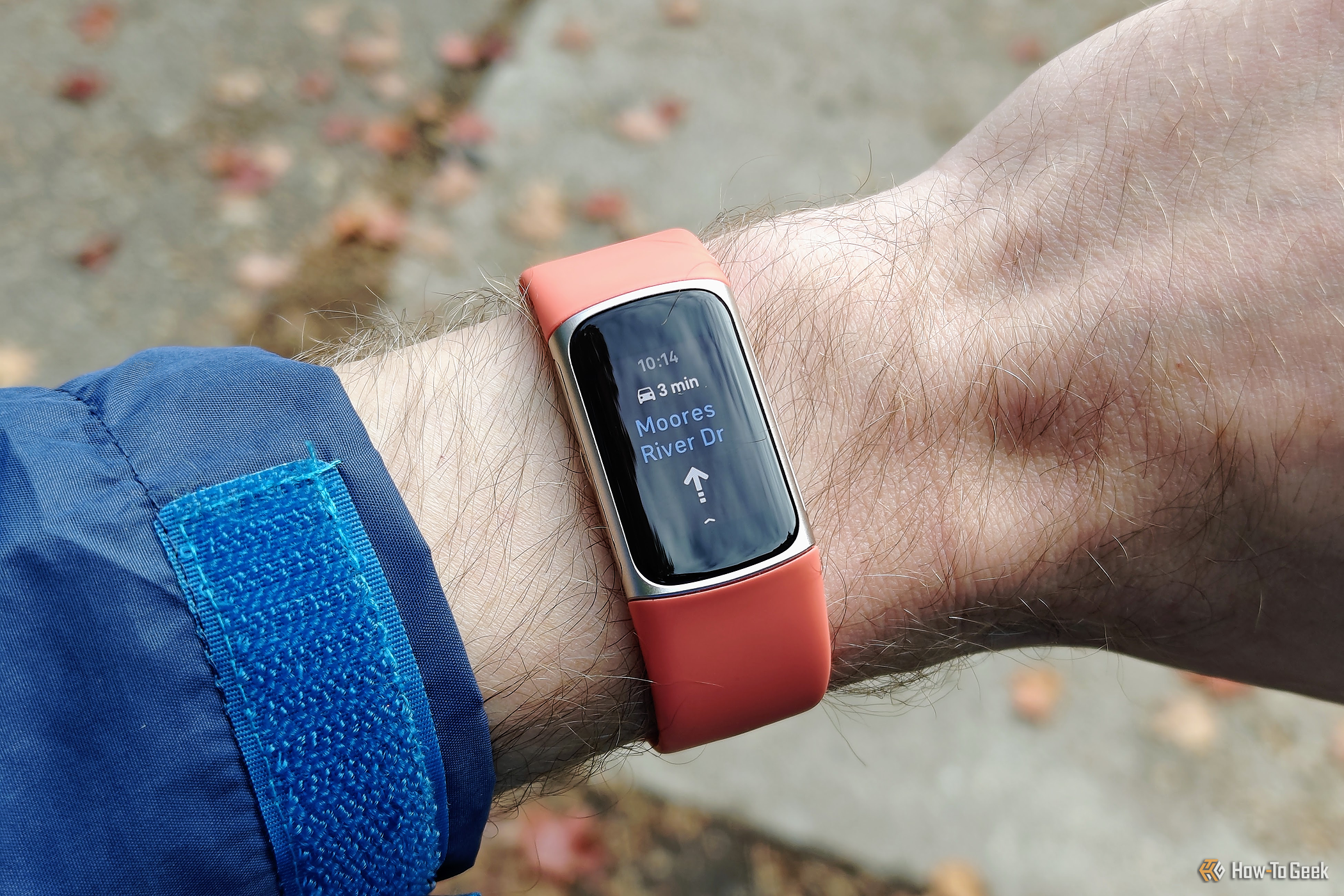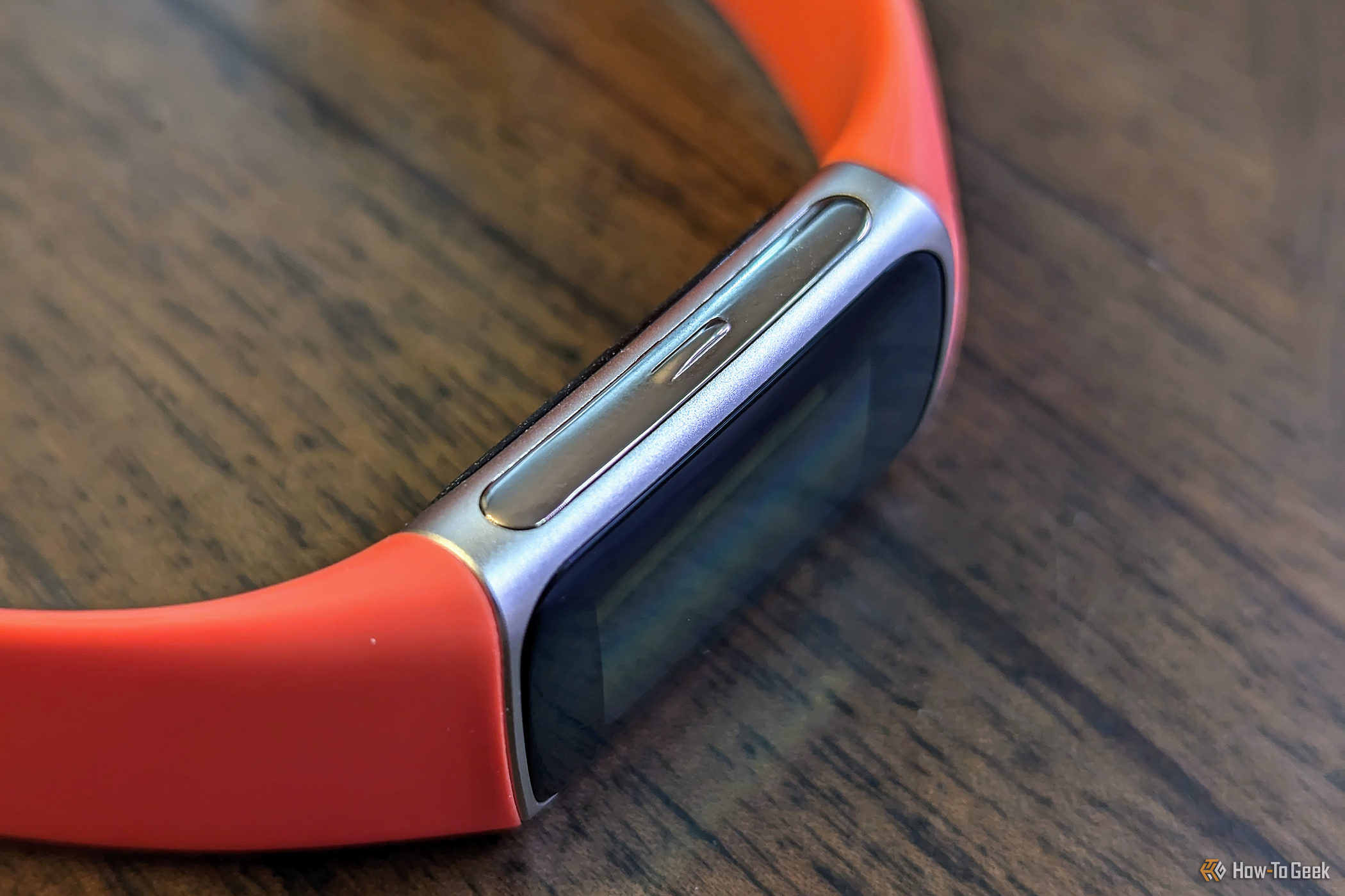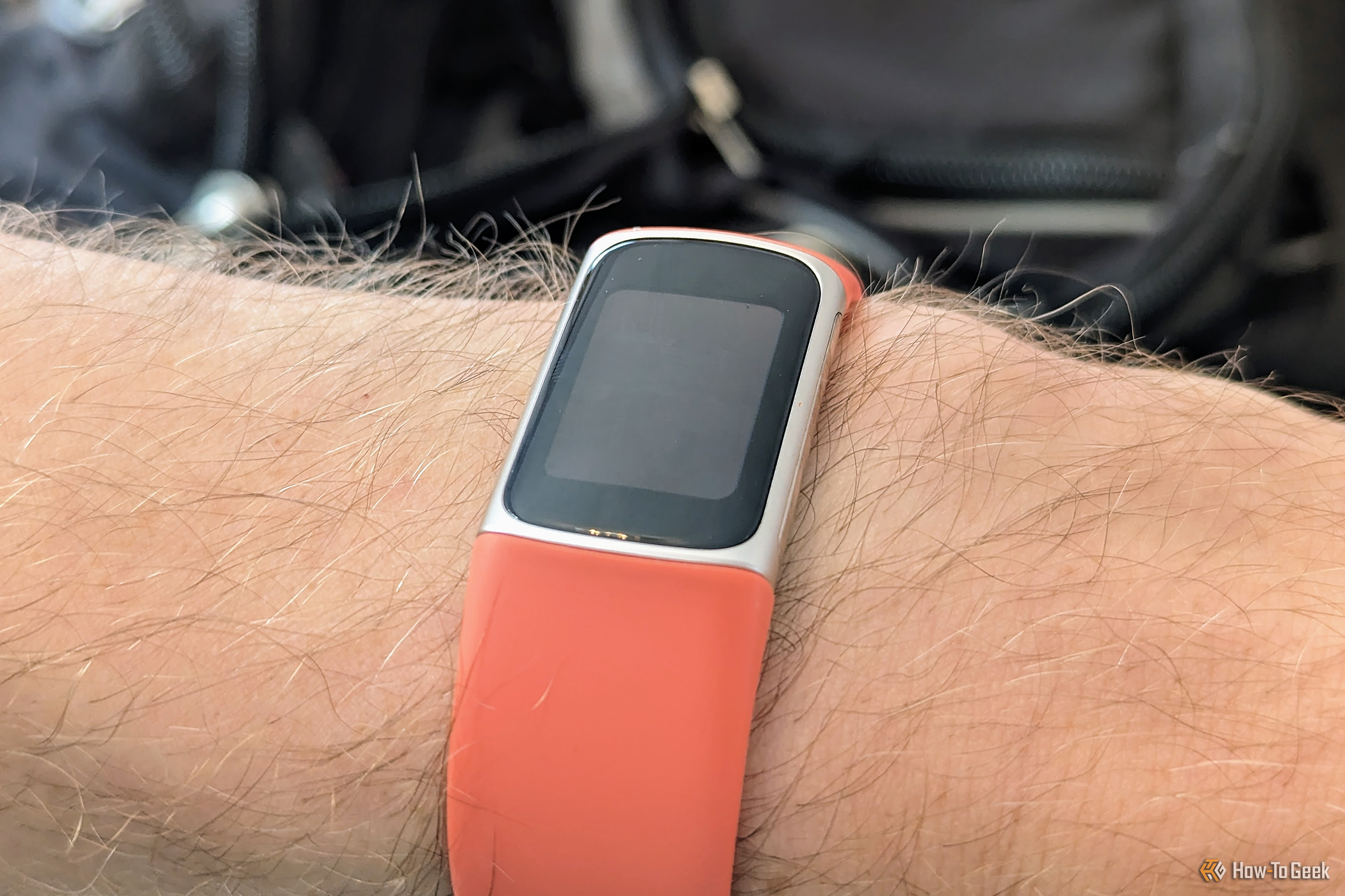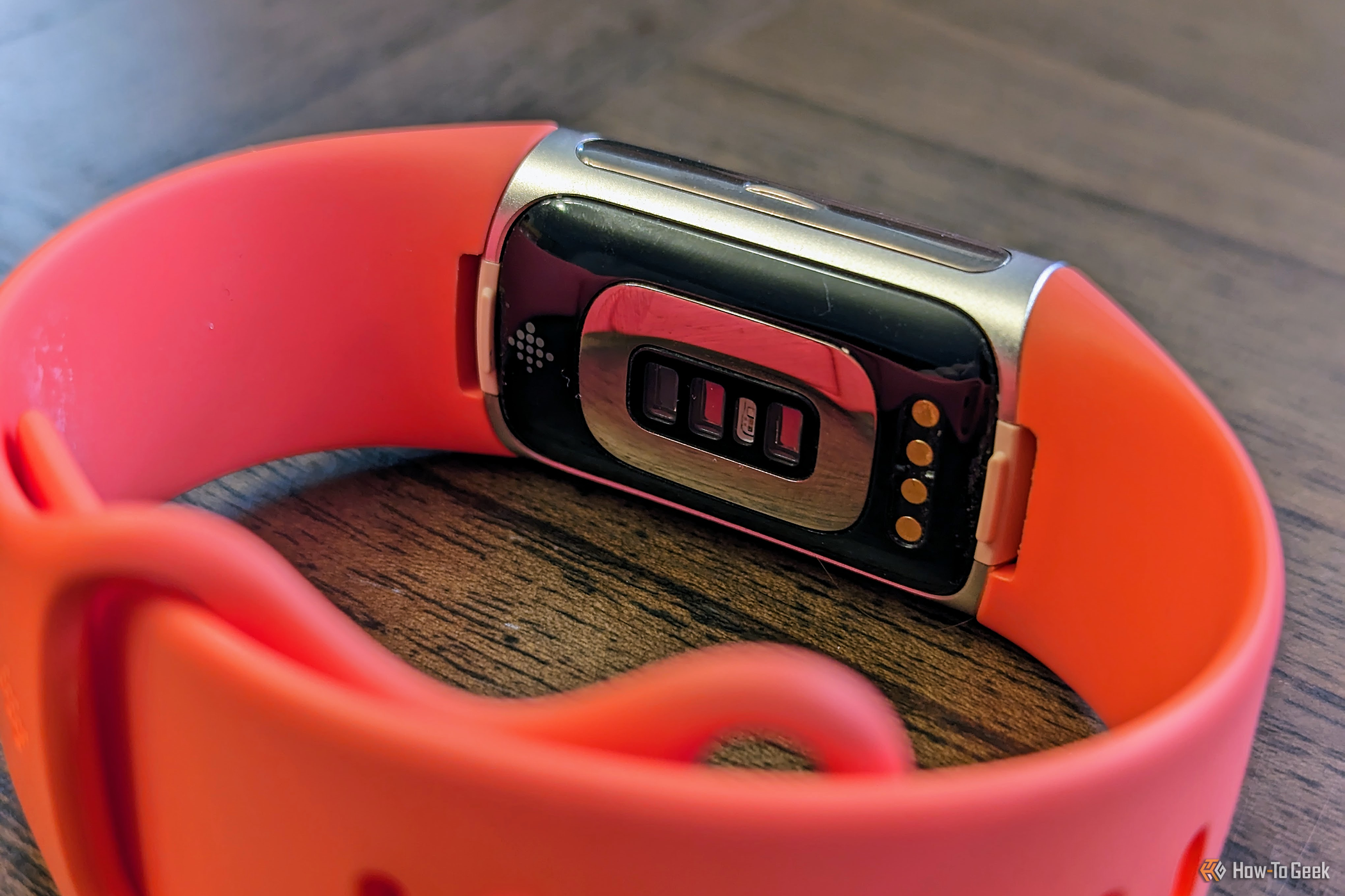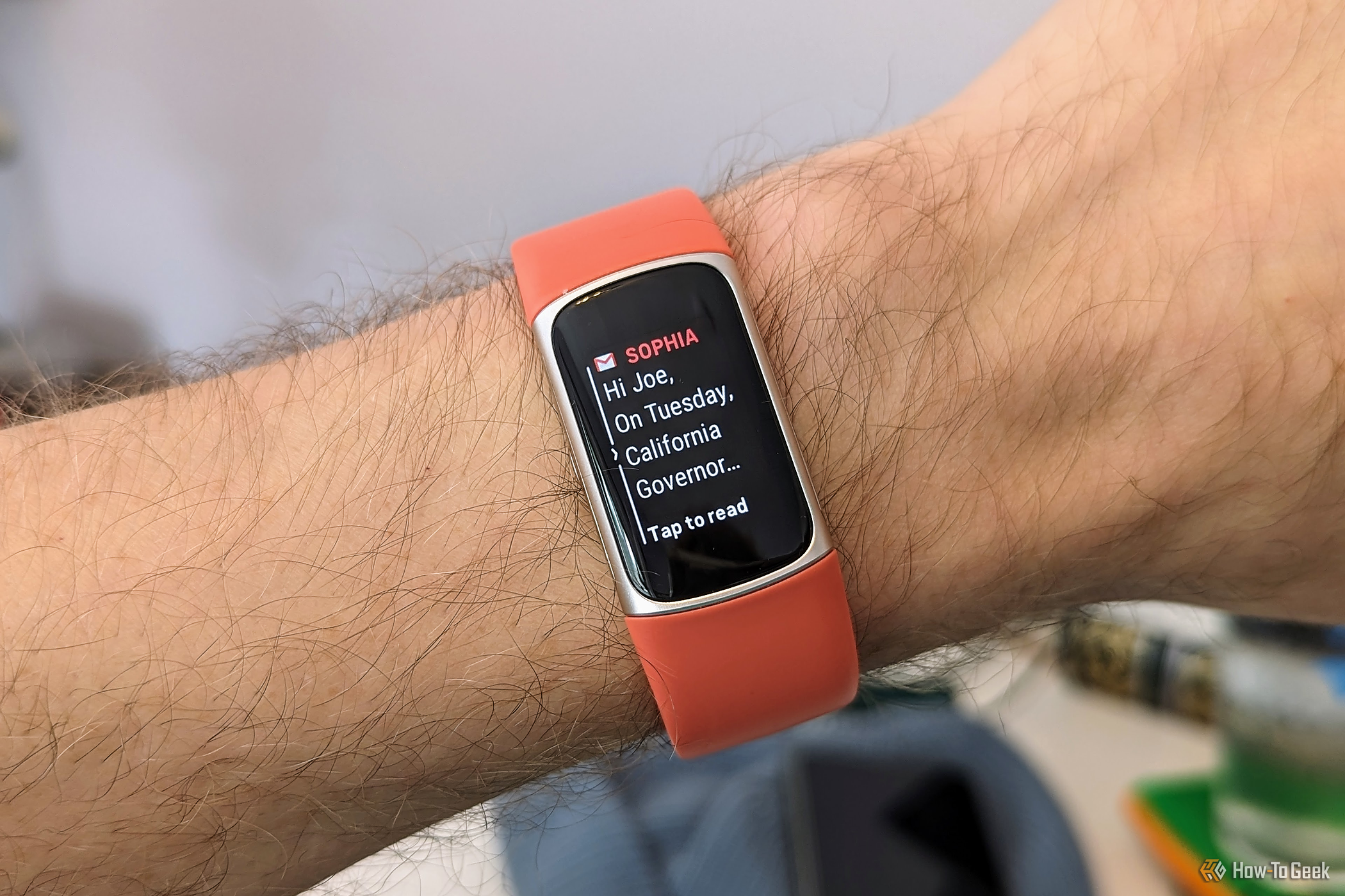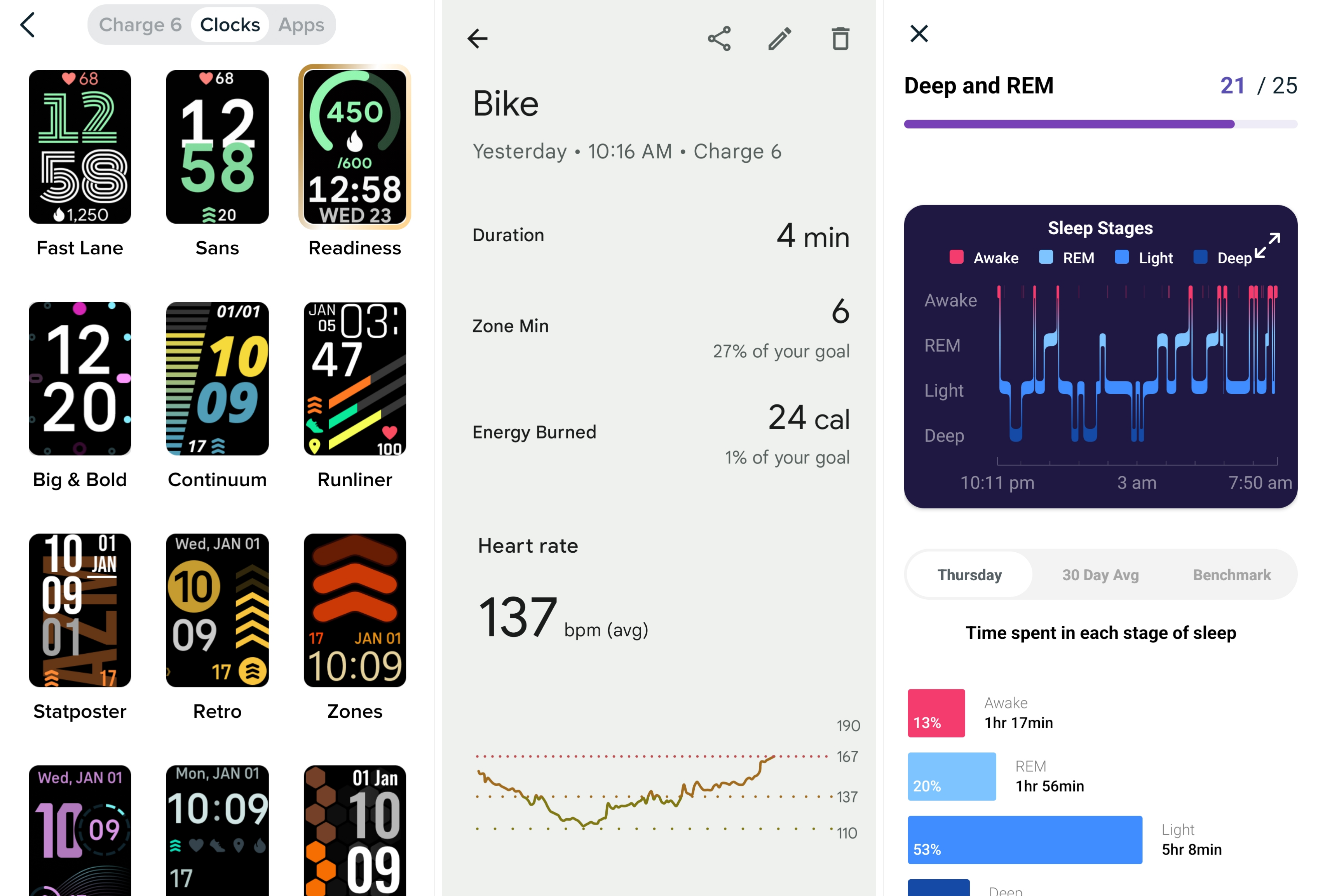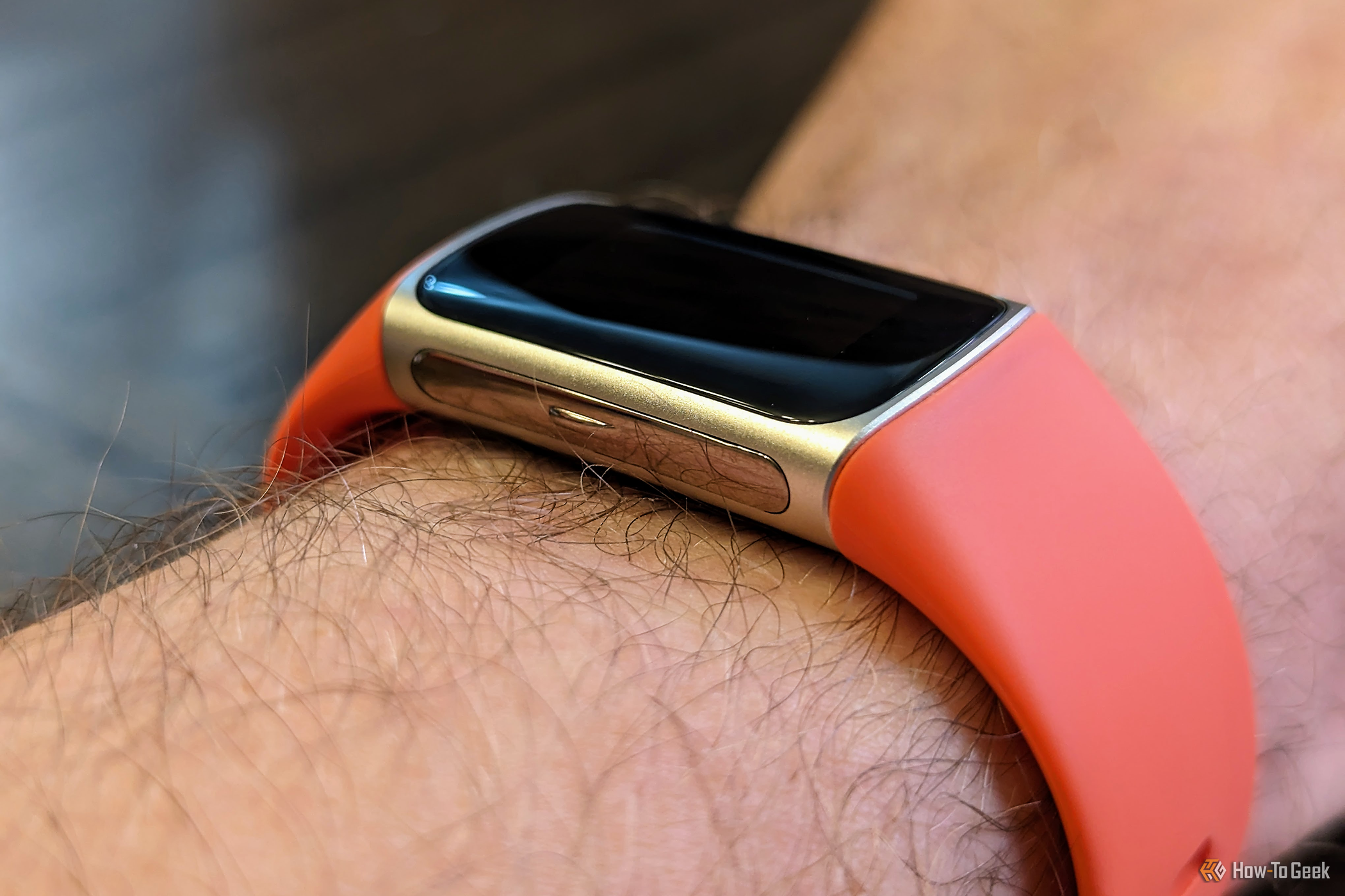Key Takeaways
- The Fitbit Charge 6 blurs the line between fitness tracker and smartwatch with its health and fitness features and integration of Google apps like Google Maps, Google Wallet, and YouTube Music.
- The Charge 6 has excellent battery life, lasting up to 7 days on a single charge, and features an accurate heart rate sensor and over 40 exercise modes.
- While the small screen may hamper some tasks and music app compatibility is limited, the Fitbit Charge 6 offers a versatile and comfortable fitness tracking experience with the added benefits of smartwatch-like features.
Many people choose smartwatches because they're more versatile than standalone fitness trackers. The Fitbit Charge 6 is not a smartwatch, but it's also trying to be more than just a fitness tracker. With Google apps onboard, the Charge 6 just might be the perfect middle ground.
I'm one of those people who chooses a smartwatch over a fitness tracker. I don't want to have one wearable for daily life and one for exercising. I've always leaned toward smartwatches despite them having slightly worse fitness tracking than standalone devices. The idea of a fitness tracker with some smartwatch features is very appealing. The Charge 6 is attempting to be a "Pixel Watch Lite," but are a couple of Google apps enough?

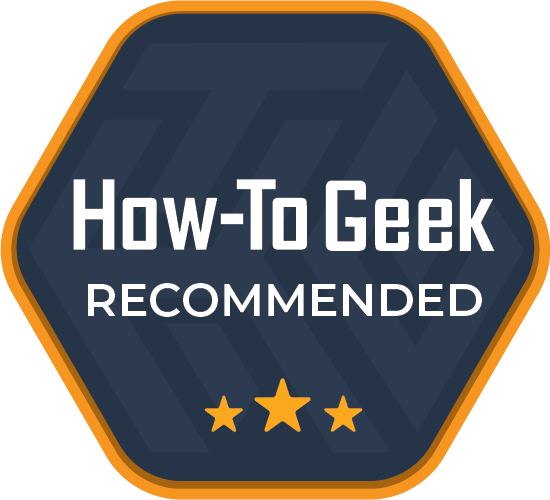
Fitbit Charge 6
The Fitbit Charge 6 blurs the line between fitness tracker and smartwatch. It has a plethora of health and fitness features along with Google Maps, Google Wallet, and YouTube Music.
- Heart Rate Monitor
- Optical
- Color Screen
- Yes
- Notification Support
- Yes
- Battery Life
- Up to 7 days
- Integrations
- Google Maps, Google Wallet, YouTube Music
- Health sensors
- ECG, EDA, SpO2
- IP rating
- 5 ATM
- Dimensions
- 1.52" L x 0.73" W x 0.46" H
- Colors
- Black, Silver, Champagne Gold
- Price
- $159.99
- Mobile payments
- Yes
- Workout detection
- Yes
- Exercise modes
- 40+
- Google apps greatly enhance the experience
- Excellent battery life
- Accurate heart rate sensor
- Over 40 exercise modes
- Screen is small for some tasks
- Limited music app compatibility
Hardware and Design
When you hear the name "Fitbit," there's a good chance the device you see in your head looks very similar to the Charge 6. The classic Fitbit design hasn't changed much over the years. It's a band of uniform width with a small vertical display that sits on top of your wrist, but there are some important details.
The Charge 6 features a matte aluminum housing in black, silver, or "Champagne Gold." I have the gold model, and if you think the photos in this review don't look very gold, you are correct. It's a very light gold tone. Both long sides of the Charge 6 have shiny strips of metal for ECG and EDA scanning.
Speaking of the sides, the Charge 6 brings back the "physical" button on the left side. This is not a button that actually clicks; it has haptic feedback to indicate when it has been pressed. You can use the button to wake the screen and go to the home screen when you're navigating the software. The button worked pretty well, and the haptic motor felt really nice.
My one gripe about the hardware is the screen: it's very small. I understand this is not a smartwatch, but it's trying to do a lot of smartwatch things. The small screen hampers some of that experience. For example, to toggle the "Water Lock" feature on or off, it asks you to "Firmly double tap." I had to really whale on it with my finger to get this to work. It would be nice if the actual screen were closer to the size of the display glass.
I was very impressed with the battery life on the Charge 6. On Monday, I only had time to charge it to 70% before I had somewhere to be. After wearing it 24/7, with notifications coming in all day, tracking a few activities throughout the week, and sleep tracking every night, the battery was still at 20% when I woke up Friday morning. Granted, I did not have the always-on display enabled, but I consider that to be pretty dang good. Basically, I only needed to charge it once a week.
Lastly, I found the Fitbit Charge 6 to be very comfortable to wear. The low-profile case has no sharp corners, and the included silicone band is soft. I barely noticed it was on my wrist while sleeping. Fitbit includes two sizes of bands in the box, which is a nice touch. All in all, the design of the Charge 6 is pretty close to what I want from a fitness tracker. It essentially disappears from my consciousness when I'm not using it.
Google Apps and Fitbit OS
The big deal with the Charge 6 is the addition of Google apps on Fitbit OS. Google acquired Fitbit back in 2021, but until now, we had only seen the fruits of that on the Pixel Watch. The Charge 6 comes with three Google apps onboard—Google Maps, Google Wallet, and YouTube Music—and you now need a Google account to sign into the Fitbit app.
Google Maps and YouTube Music can be accessed by swiping left or right from the clock face. In order to use Google Maps, you have to start navigation from your phone. The turn-by-turn directions are then displayed on the Charge 6, and it will even show an activity summary if you were using walking or biking directions. I was very happy to see Google Maps directions on a fitness tracker, and it worked really well.
The YouTube Music applet is essentially a remote. It allows you to play, pause, skip, and browse music. Sadly, this is the only music app that integrates with the Charge 6. The functionality is great, but as a Spotify user, it was completely useless to me. There's no generic media controller for whatever is playing on your phone. It's YouTube Music or nothing.
Google Wallet works very similar to how it works on smartwatches. I already had cards in Google Wallet, so it was super simple to add one to the Charge 6. Since NFC is not always active, you have to swipe down from the clock face and manually open Wallet every time you want to use it. This isn't a big deal, but it is a bit annoying to enter the four-digit pin on such a small screen. Thankfully, you only have to do that every 24 hours.
This was my first experience with the Fitbit OS, and I was pretty impressed with it. I've knocked the small screen several times, but the OS takes that into account nicely. I had no trouble getting around with the swipe gestures and side button. Essentially, everything I wanted to do was no more than two or three swipes away. It's simple without feeling patronizing or restricted.
Notification mirroring is one thing I was particularly curious about before I received the device. It's one feature that I use a lot on my smartwatch. The experience on the Charge 6 is surprisingly not much different than a smartwatch, just a bit more limited due to the small screen. Every notification on your phone can be sent to the Charge 6, and there are quick replies and quick actions as well.
There are a couple of software-related things that I didn't love. First, Fitbit's watch faces are severely lacking. I didn't particularly like any of them, and very few watch faces even allow you to customize basic things like colors. I also really missed having weather information available on my wrist. A dedicated weather applet or a watch face with a temperature metric would be very much appreciated.
The Fitbit Charge 6 is clearly one of the most smartwatch-y fitness trackers you can get. I honestly don't use a ton of apps on my smartwatch. Google Maps, Wallet, and notification support are almost enough to replace my smartwatch entirely. The only app I really missed was Google Assistant. That's a big win for a $160 fitness tracker.
Health and Fitness
The Charge 6 may be blurring the line between smartwatch and fitness tracker, but it's still a fitness device at its core. It has over 40 exercise modes to choose from, including running, biking, walking, HIIT, strength training, and even dancing. When not actively working out, the Charge 6 also tracks your steps, distance, calories burned, and Active Zone Minutes, which tells you how much time you spend in different heart rate zones.
On the “health” side of “health and fitness,” the Charge 6 has an ECG app that can detect irregular heart rhythms and notify you of possible atrial fibrillation. It also has an EDA sensor that measures your skin’s electrical changes and helps you understand your stress levels. Additionally, it tracks your blood oxygen saturation (SpO2), sleep quality, and provides a Daily Readiness Score.
It’s easy to quickly start tracking an activity from the Charge 6 with a few swipes and taps, but I found that it's really good at automatically recognizing activities. It knew when I was walking and biking, and it even gave me credit for “Sport” while playing pickleball. However, you don’t get as much information from automatic workouts as you do when manually starting them. For example, GPS is not tracked on automatic workouts. Still, this is a feature that hasn't always worked well for me on other devices, so it's nice to have as a reliable backup.
Speaking of GPS, I was happy with the accuracy of the location tracking during workouts. It seemed to take a little longer to connect than I’m used to, but the results were more accurate than my Galaxy Watch 5. That’s what I was hoping for from a full-blown fitness tracker, but it was nice to confirm.
Sleep tracking is another big part of the Charge 6’s health and fitness suite, but I'm never sure what to do with this data. There's a bunch of cool information about sleep phases, sleeping heart rate, and oxygen variation, thanks to the heart rate sensor, SpO2 pulse oximeter, and the new machine learning algorithm. The sleep scores mostly reflected how long I was in bed, not necessarily how well I actually slept. Sleep tracking isn't very useful if you're not looking into your other health and fitness data for correlations. Simply tapping "Sleep Mode" before bed and looking at graphs every morning isn't accomplishing much.
One important thing to note is some of the best health and fitness features are kept behind the Fitbit Premium paywall. Much of the advanced sleep-tracking information I mentioned, for example, is not available for free. Personalized workouts, the Daily Readiness Score, and Fitbit's library of workouts also require Fitbit Premium. The Charge 6 does come with six months of Premium for free, but it's $10 per month after that if you choose to keep it.
Overall, the Charge 6 is a fitness tracker above all else, and Fitbit certainly has not forgotten that fact. I would be more than willing to trust this device for all my activity tracking needs. The Charge 6 does a great job of hitting a sweet spot that's easier to use than a smartwatch with a dozen other features besides health and fitness but isn't as complex as something like a Garmin.
Should You Buy the Fitbit Charge 6?
I feel pretty confident in saying the Fitbit Charge 6 is one of the best fitness trackers you can buy. As I look back over my review, there really aren't many negatives. Yes, the screen is small, but this is not a smartwatch. The fact that I have to remind myself of that is a big point in the Charge 6's favor.
The Charge 6 sits atop Fibit's tracker lineup at $160—$60 more than the Inspire 3. If we step up to Fitbit's smartwatch lineup, the Charge 6 is $40 less than the Versa 4 and $140 less than the much more advanced Sense 2. However, if you want Google apps to go with your Fitbit experience, the only other option currently is the $350 Pixel Watch 2 or an older Pixel Watch.
That makes the decision pretty easy if you're in the market for a Fitbit. The Charge 6 has many of the health and fitness features you'd get from a more expensive Fitbit device, plus a few key goodies from the Pixel Watch. In all honesty, I don't think most people need a full-blown smartwatch, and that makes the Charge 6 a nearly perfect device.
It's amazing how just a couple of key "smartwatch apps" and decent notification support enhance the experience. Not to mention only needing to charge the device weekly instead of daily. For the first time, I can actually see myself using a fitness tracker for more than just, well, fitness tracking. The Charge 6 is almost a smartwatch, and that might be smart enough.


Fitbit Charge 6
The Fitbit Charge 6 blurs the line between fitness tracker and smartwatch. It has a plethora of health and fitness features along with Google Maps, Google Wallet, and YouTube Music.
- Heart Rate Monitor
- Optical
- Color Screen
- Yes
- Notification Support
- Yes
- Battery Life
- Up to 7 days
- Integrations
- Google Maps, Google Wallet, YouTube Music
- Health sensors
- ECG, EDA, SpO2
- IP rating
- 5 ATM
- Dimensions
- 1.52" L x 0.73" W x 0.46" H
- Colors
- Black, Silver, Champagne Gold
- Price
- $159.99
- Mobile payments
- Yes
- Workout detection
- Yes
- Exercise modes
- 40+

